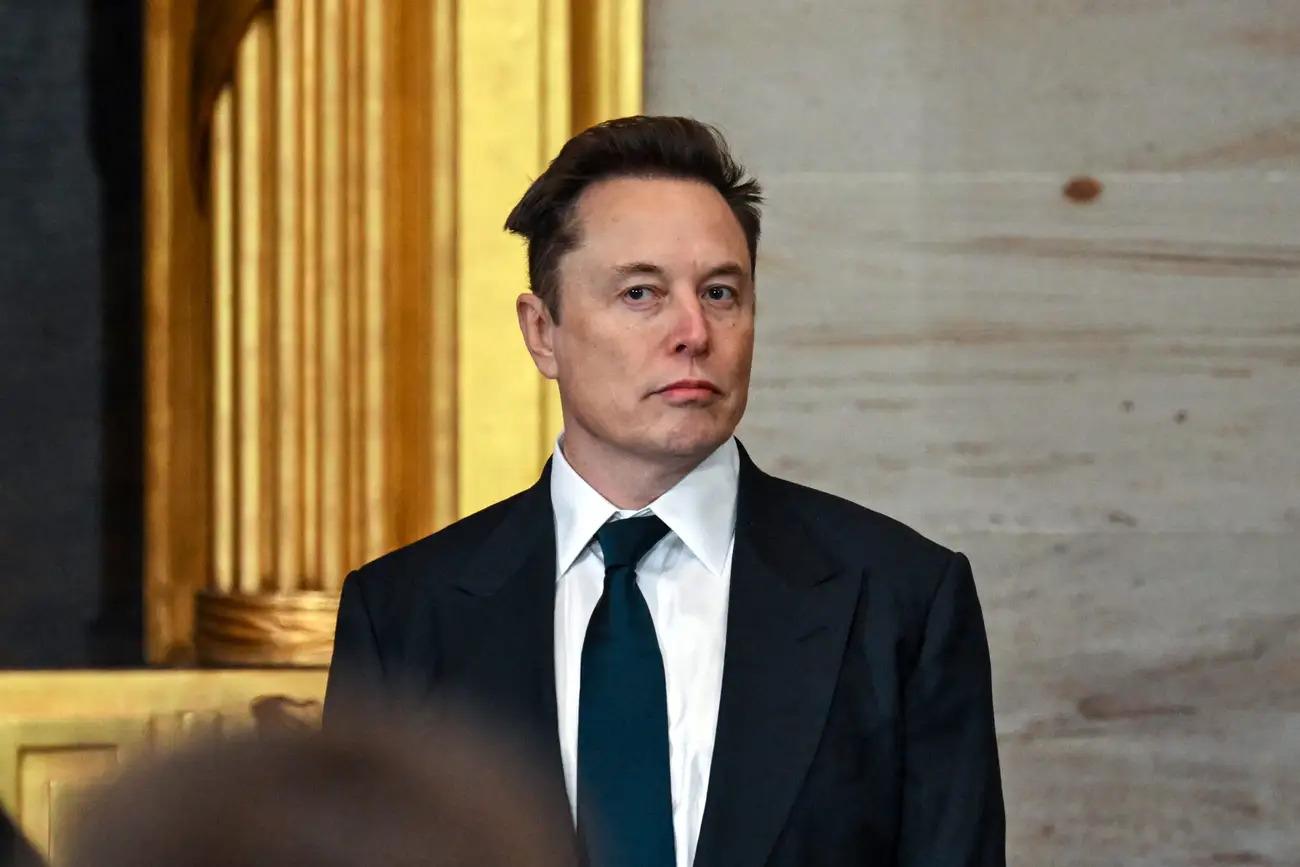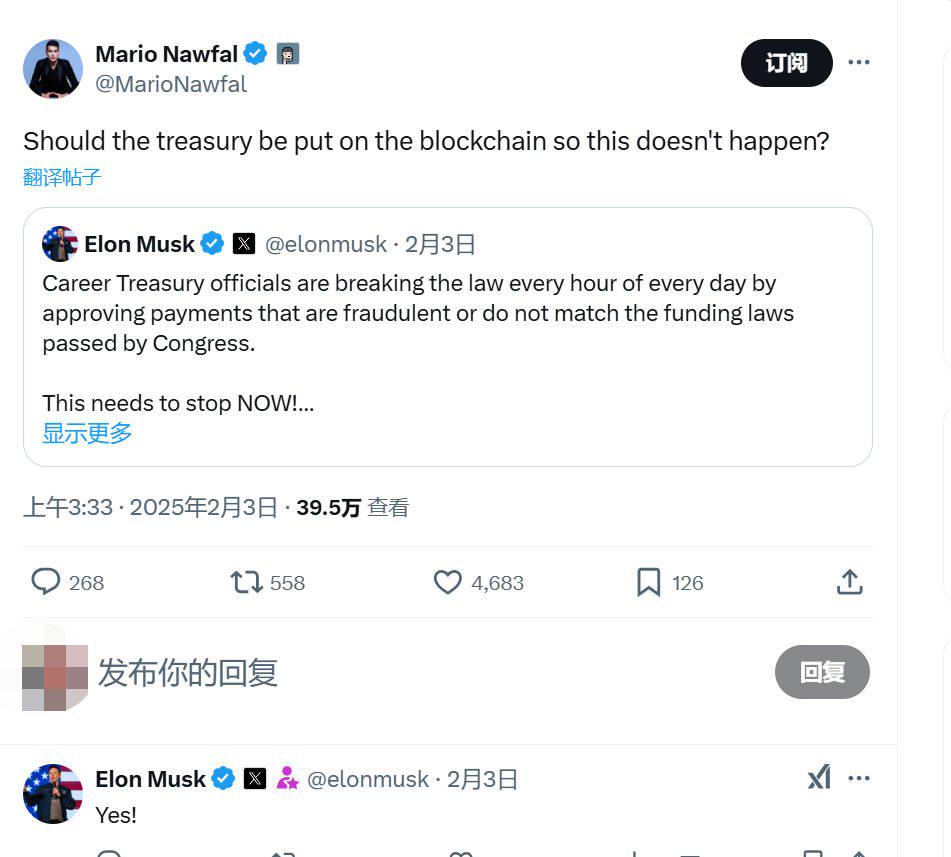
Author: Weilin, PANews
On February 13, the U.S. Government Efficiency Department (DOGE) officially launched its website to disclose details and evidence of government cost reductions, marking the latest progress in the department's efforts to cut costs for the U.S. government. As of the afternoon of February 13, according to doge-tracker data (compiled from DOGE Twitter data), Musk's Government Efficiency Department has saved U.S. taxpayers $37.89 billion, which only accounts for 1.9% of Musk's goal to reduce U.S. government spending by $2 trillion.
On February 9, Coinbase CEO called for increased transparency in government spending through blockchain technology. "Great progress, DOGE," Brian Armstrong wrote in a post on the X platform on February 9. "Imagine if every government expenditure could be transparently recorded on the chain; it would make auditing much easier." On February 10, Cathie Wood, founder of asset management firm Ark Invest, also supported Musk's idea of putting all U.S. government spending on the blockchain, commenting, "Transparent, efficient, secure: win-win-win."
DOGE is Considering Using Blockchain Technology to Reduce Government Costs
According to a report by Bloomberg in late January, DOGE is considering using blockchain technology to reduce government costs, with insiders revealing that relevant internal discussions are underway. If DOGE launches the plan, it could be large-scale and potentially adopted across multiple government departments.
Bloomberg cited insiders reporting that during the discussions, there were mentions of using blockchain to track federal spending, protect data, make payments, and even manage buildings. One insider stated that individuals associated with DOGE have met with representatives from several public blockchain networks to assess the technology. A person who visited Palm Beach, Florida, last December proposed several blockchain applications to Trump transition team officials, focusing on the technology's potential in protecting critical government data and tracking the flow of funds.
On February 3, Musk shared his views on moving U.S. Treasury transactions to the blockchain. In a post on the X platform, Musk emphatically responded, "Yes!"

The U.S. Government Efficiency Department was officially created by an executive order signed by President Trump on January 20, tasked with modernizing federal technology and software to maximize government efficiency and productivity. Trump stated that the department would work with the White House Office of Management and Budget to identify spending cuts and provide recommendations by July 4, 2026.
Its leader is entrepreneur Musk, who was originally set to co-lead with Vivek Ramaswamy, but Vivek withdrew for personal reasons before the official appointment. DOGE has an office in the Eisenhower Executive Office Building, with about 20 employees. An insider revealed that Musk recruited about 100 volunteers to code for his project before Trump's inauguration.
Musk is pushing for the use of blockchain technology to force government transparency, but he is not the first to propose this idea. In April 2024, former presidential candidate Robert F. Kennedy Jr. expressed his desire to put the entire federal budget on the blockchain. At a rally in Michigan, the politician told the audience, "Every American can see every item in the budget at any time, 24/7. We will have 300 million eyes on our budget. If someone spends $16,000 on a toilet seat, everyone will know."
Kennedy's proposal received widespread support from advocates of small government and sound money, who believe that U.S. government spending has gone out of control.
Which Blockchain Network is Likely to be Favored?
Jean Rausis, co-founder of the decentralized finance platform Smardex, stated that Musk's proposal to move the U.S. Treasury to the blockchain could make the U.S. the "de facto global leader in blockchain innovation." "While it's hard to say which blockchain can handle this task, it is important that it must be permissionless. Otherwise, the promised transparency will be mere talk. However, if the U.S. Treasury adopts decentralized infrastructure, it could become a catalyst for the convergence of the Web2 and Web3 worlds."
Following Bloomberg's report, Cardano founder Charles Hoskinson immediately stated on X, "I think this task should be accomplished by a collaboration between Cardano, Bitcoin, and Midnight. Hey, DOGE master Musk, reach out to us, we’ll help for free."
On January 26, Dragonfly managing partner Haseeb Qureshi predicted that the U.S. Government Accountability Office (GAO) might launch an AVAX sub-chain in 2025 for reporting public spending, with all expenditures traceable on-chain through stablecoins. Government agencies and contractors' wallets would be publicly disclosed daily and analyzed by public data detectives.
Currently, there are use cases on Avalanche; on July 30 last year, the California Department of Motor Vehicles digitized 42 million vehicle title certificates on the Avalanche blockchain to detect fraud and streamline the ownership transfer process.
Additionally, Ava Labs (the company behind the Avalanche blockchain) has partnered with Deloitte and the Federal Emergency Management Agency (FEMA) to launch a new disaster relief platform to help the U.S. government streamline disaster compensation applications submitted to FEMA.
The idea of applying blockchain to large-scale projects is not new, although applying it to large entities like the U.S. government remains an unproven concept. As early as 2022, the General Services Administration (GSA) was studying the introduction of ledger systems (like blockchain) into the daily operations of the federal government under its IT program. The agency held the U.S. Federal Blockchain Forum in 2017 and is exploring how to use smart contracts in patents, trademarks, IT applications, and foreign aid delivery. According to public reports from 2022, the Delaware Blockchain Initiative has also explored blockchain technology in public record organization and private sector data security.
In addition to Cardano and Avalanche mentioned above, on January 28, the MOVE token price of Movement Labs surged significantly amid rumors that the company is consulting for Musk's DOGE. Reports indicate that this modular network has contacted the organization, although the news has not been confirmed. Shortly after, Movement Labs founder Rushi Manche responded on X to news of World Liberty Financial's large purchase of MOVE, stating, "Strategic Move reserves. We are proud to be the first altcoin, the first modern blockchain platform, and the first alternative virtual machine under the new government leadership. MOVE is made in America."
Furthermore, the Trump family project World Liberty Financial recently announced a partnership with Ondo Finance, which launched the institutional Layer 1 blockchain Ondo Chain, although this collaboration mainly targets the RWA sector.
As of the afternoon of February 13, based on the holdings of World Liberty Financial on Arkham Intelligence, the project holds not only ONDO and MOVE but also a significant amount of ETH, with Ethereum serving as the deployment network for the presidential family project, potentially giving it a first-mover advantage in government collaboration.
What challenges will the U.S. government face in further utilizing blockchain technology? Chainlink community contributor Zach Rynes posted on X, stating, "It is highly unlikely that the U.S. government will use a single blockchain to cover all departments and agencies. Do you think the ledger requirements of the EPA (Environmental Protection Agency) and FDA (Food and Drug Administration) are exactly the same as those of the DoD (Department of Defense) and DHS (Department of Homeland Security)? Probably not."
He indicated that the U.S. government will ultimately use multiple private and public ledgers for various purposes, such as increasing spending transparency or automating manual processes. It is certain that:
- All these different public/private blockchain ledgers will need to communicate and share data across agencies through cross-chain interoperability standards;
- Agencies will need to seamlessly connect their existing backend systems and infrastructure to the various public/private chains used by the government through an abstraction layer;
- Agencies using blockchain to automate manual processes will need access to external data resources to securely trigger smart contract functions using oracles.
- A unified platform is needed to meet all these off-chain data, cross-chain interoperability, and legacy system connection requirements.
As Musk pushes for the U.S. Treasury to move transactions on-chain, blockchain technology may be moving towards a whole new application domain. The support from Coinbase CEO Brian Armstrong and ARK Invest founder Cathie Wood adds more attention to this topic. In the future, which blockchain platform will stand out as a pillar of government digital transformation may have profound implications for the entire crypto industry.
免责声明:本文章仅代表作者个人观点,不代表本平台的立场和观点。本文章仅供信息分享,不构成对任何人的任何投资建议。用户与作者之间的任何争议,与本平台无关。如网页中刊载的文章或图片涉及侵权,请提供相关的权利证明和身份证明发送邮件到support@aicoin.com,本平台相关工作人员将会进行核查。




